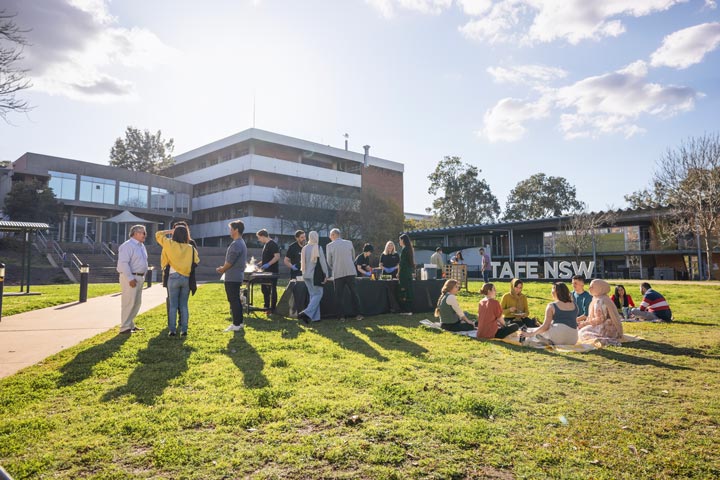History of TAFE NSW

TAFE NSW has been training the Australian workforce for over 140 years, adapting to industry needs.
As a leading vocational education provider, we offer courses that equip students with practical skills for today’s job market.
Whether you're starting a new career, upskilling, or pursuing further education, TAFE NSW provides the support and resources to help you succeed.
1800s
1830s: In 1833, TAFE NSW was known as The Sydney Mechanics School of Arts. This educational institute, a leader in NSW at the time, held it’s first class in mechanical drawing.
1850s: During the 1850s, the gold rush stimulated the growth of Australia’s eastern colonies. Diversification into agriculture, manufacturing, and transportation created a strong economy and the demand for skilled labour.
1883: In 1883, the NSW State Government took over Sydney Technical College. This date is often cited as the birth of TAFE NSW, though it wasn't yet called that. The college initially offered courses in applied sciences, engineering, and trades.
1890s: In 1891, Sydney Technical College moved from its location in the centre of Sydney to a new, larger campus at Ultimo. This was because of growing student numbers and an expanding curriculum.

1900s
1949: The 1949 Technical Education and NSW University of Technology Act was legislated to recognise a technical education system. This Act marked a significant step forward in the state’s commitment to vocational education.
1950s: Australia's post-WWII industrial boom created a demand for technical education to meet workforce needs, especially for major projects like the Snowy Mountains Scheme.
1970s: The Technical and Further Education Commission (TAFEC) was established with Commonwealth funding. Sydney Technical College was relaunched as TAFE NSW and soon became an educational institution with its own administration.

2000s
2016: The NSW Government released a strategic plan to transform TAFE NSW for the 21st-century workforce. This laid the foundation for our 'One TAFE NSW' vision to better skill the current and future workforce.
2017: TAFE NSW adopted a centralised model, uniting 150 locations state-wide. This model improved outcomes for students and employers. It also reinforced our position as one of the leading providers of vocational education in Australia.
Present: TAFE NSW continues to evolve to meet the skills demand of industry and communities, as well as the needs of learners across NSW. With over 150 campus locations, we are one of the leading providers of vocational education across NSW.

Training for everyone
TAFE NSW courses will help prepare you with job-ready skills for today and into the future. We offer a variety of courses, whether you're seeking skills-gap training or just looking for something fun. Whatever your interest, we have a course for you.
Whether you prefer studying face-to-face on campus, or online for flexibility, we have many different options available.
Explore our wide range of courses.
Explore more

About TAFE NSW
Discover everything TAFE NSW has to offer. From who we are to the wide range of courses and training available for students and businesses.

Engage and partner
TAFE NSW is creating opportunities to create change in local communities. Explore how we're working with partners to achieve this.

Annual report
Stay informed with the latest facts, figures, and key insights about TAFE NSW. Read our latest and past annual reports.